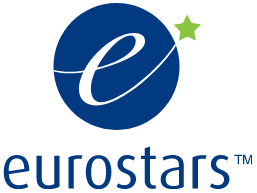Rectified Polarisation Coupling for Diode Laser Bars
Modern material processing with lasers has increased demands in terms of power and power density which cannot be obtained directly with diode lasers.
To improve the power density of diode laser bars a multi-step polarization coupling was developed. The beam quality of the combined beam then possesses the beam quality of the single bar while the output power is scaled up considerably.
For that a multitude of laser bars are inserted into individual resonators which share the last section in front of the outcoupling mirror. Through a clever choice of spectral filters all lasers run on individual but intertwined spectral combs of longitudinal laser modes. The reuslt is an increase in power by a factor of roughly 1.8 per coupling stage.
Principle of Coupling
An array of laser resonators is built so that they share the outcoupling mirror. One or more Lyot-filters separate different frequency components into the different channels which are each driven by a separate gain element.
From this arrangement of filters every diode laser can only oscillate on the wavelength that it is assigned to by the filter.
Spectral Simulations
In close cooperation with Weierstrass-Institut for Applied Analysis and Stochastics (WIAS) in Berlin the corresponding resonators have been simulated.
By means of finite elements in two spatial and one temporal dimension the spectral behaviour and the angular distributions of the radiation could be determined. It can be seen that the individual lasers oscillate on intertwined spectra.
Due to the finite angular acceptance of the filters and other optical disturbances a certain amount of cross talk between the channels is unavoidable.
Experimental Spectra
Coupling four high-power diode-laser bars in a two-stage process delivers the expected intertwined spectra with very good spectral separation.
In the future it should therefore be possible to again almost double the output power of this once again polarized light by using a second such setup.
Products
Together with monocrom a platform for four to eight high-power diode-laser bars was developed.
Depicted here is a Flex10 System which delivers 1kW at 976nm.
Also planned upon request are different powers and wavelengths (as of now: 1300-1500nm and 2100nm).
For further details please contact monocrom.
- Project partners:


- Specifications: up to 1kW, BPP < 44, λ=976nm
- Publications:
- JOSA-B Vol.36, No.7 (2019) C. Brée, V. Raab, J. Montiel-Ponsoda, G. Garre-Werner, K. Staliunas, U. Bandelow, M. Radziunas; "Beam-combining scheme of high-power broad-area semiconductor lasers with Lyot-filtered reinjection: modeling, simulations, and experiments"
- SPIE PhotonicsWest 2020: Joan Montiel-Ponsoda; "@Flex: CW Fiber-Coupled Diode: Laser with enhanced brightness"
- IEEE Journal of Selected Topics in Quantum Electronics (Early Access): Mindaugas Radziunas and Volker Raab: "Modeling and Simulation of a Cascaded Polarization-coupled System of Broad-area Semiconductor Lasers"
- EU-patent
- Final report (in German) at TIB: DOI, download, summary
- further (unpublished) patents





